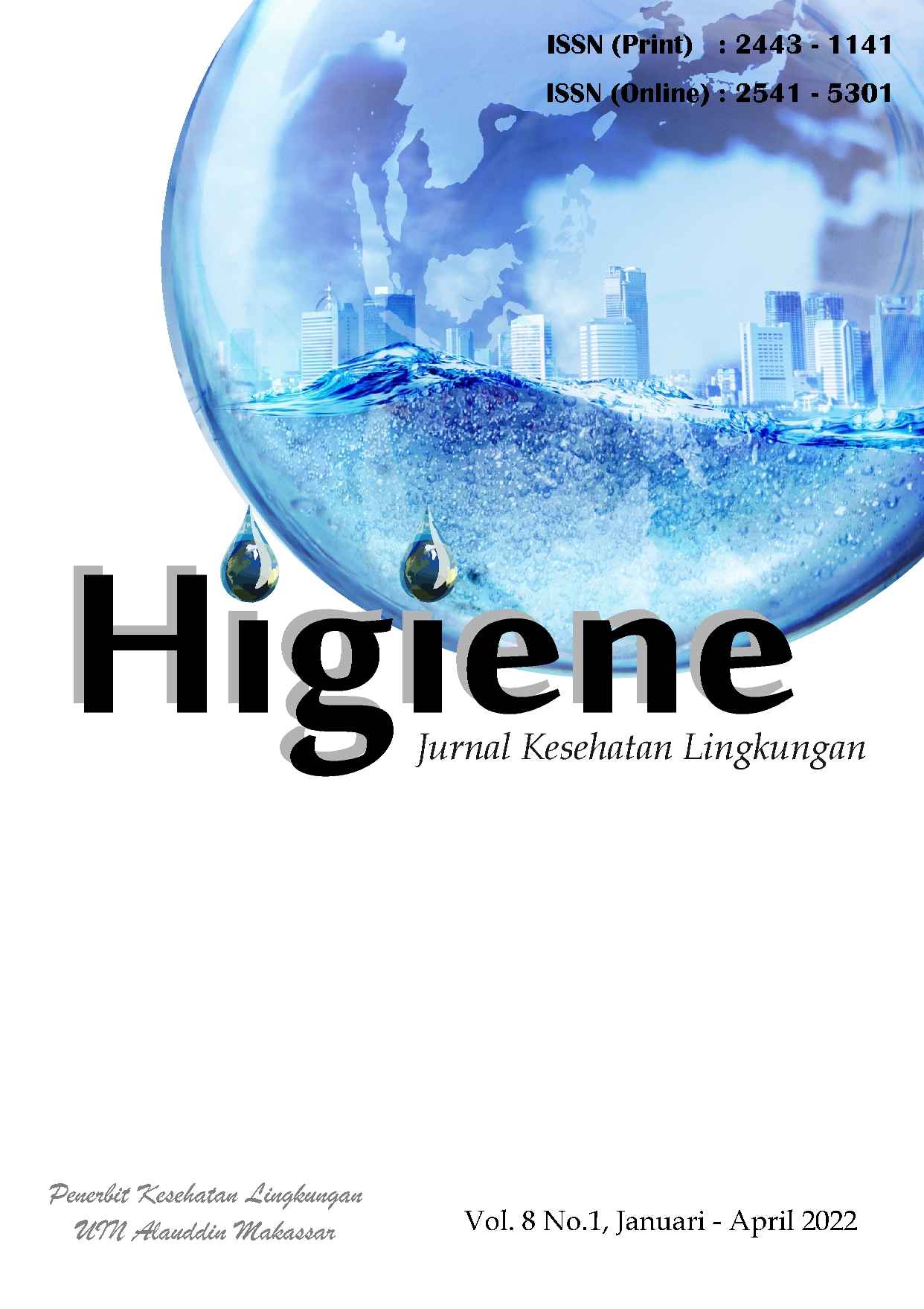The Difference in Concentration Ability Tomato Leaf Extract (Sollanum lycpersicum l.) Against Larvae of Power Kill Aedes aegypti
Abstrak
The Aedes aegypti mosquito is a vector carrying Dengue Hemorrhagic Fever (DHF) which is commonly found in tropical and subtropical areas which can cause outbreaks and can cause death in a short period of time. Infectious diseases are still a public health problem caused by the mosquito vector Aedes Aegypti, therefore control is needed to break the chain of disease transmission by eradicating using larvicides. The purpose of this study was to determine the effect of different concentrations of tomato leaf extract (Solanum Lycopersicum L.) on the killing power of larvae Aedes Aegypti. This type of research is experimental research. The sample in this study was 20 larvae for Aedes Aegypti each treatment, so a total of 300 larvae used were exposed to tomato leaf extract concentrations of 0.8%, 1%, and 1.2%. Observations were made for 24 hours with an interval of 4 hours and were replicated three times. The results showed that tomato leaf extract (Solanum Lycopersicum L.) on the killing power of larvae Aedes Aegypti at a concentration of 0.8% was able to kill 9 larvae within 24 hours, a concentration of 1% was able to kill 11 larvae within 24 hours, and a concentration of 1 ,2% was able to kill 14 larvae within 24 hours. The conclusion of this study the concentration of 1,2% tomate leaf extract was 70% effective in killing larvae Aedes Aegypti.
- Keywords : Tomato Leaf Extract, Aedes aegypti Larvae
##submission.copyrightStatement##
##submission.license.cc.by4.footer##Informasi Hak Cipta
KEBIJAKAN HIGIENE : JURNAL KESEHATAN LINGKUNGAN (AKSES TERBUKA)
Syarat yang harus dipenuhi oleh Penulis sebagai berikut:
- Penulis menyimpan hak cipta dan memberikan jurnal hak penerbitan pertama naskah secara simultan dengan lisensi di bawah Creative Commons Attribution License yang mengizinkan orang lain untuk berbagi pekerjaan dengan sebuah pernyataan kepenulisan pekerjaan dan penerbitan awal di jurnal ini.
- Penulis bisa memasukkan ke dalam penyusunan kontraktual tambahan terpisah untuk distribusi non ekslusif versi kaya terbitan jurnal (contoh: mempostingnya ke repositori institusional atau menerbitkannya dalam sebuah buku), dengan pengakuan penerbitan awalnya di jurnal ini.
- Penulis diizinkan dan didorong untuk mem-posting karya mereka online (contoh: di repositori institusional atau di website mereka) sebelum dan selama proses penyerahan, karena dapat mengarahkan ke pertukaran produktif, seperti halnya sitiran yang lebih awal dan lebih hebat dari karya yang diterbitkan. (Lihat Efek Akses Terbuka).

